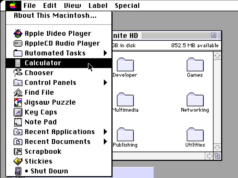
As much as humans tend to intervene in a plant’s growth processes, the truth is that seeds intrinsically have everything they need to sprout, thrive, flower, and reseed themselves on their own—under the right conditions, anyway. But mitigating factors, from increasingly abrupt weather shifts to the creep of invasive species, means they need a little more help from us than they really should.
For example, maybe you buy seeds and go to the trouble of sprouting them indoors and planting the resulting starts where and when they’ll be most likely to succeed. That’s great—but you could be skipping what is an essential step for lots of seeds: cold stratification. Many seeds require the period of intense, wet cold a winter produces in order to germinate in spring. Tossing your seeds into the ground before winter begins will {hopefully) allow them to experience those conditions, but you can also fake the process indoors.
Many types of seeds require cold stratification
Most of your tall, spiky flowers need stratification—agastache, delphinium, foxglove, liatris, larkspur, and hollyhock, to name a few. But it’s not just the tall varieties—rudbeckia, aster, coneflowers, lupine, bee balm, lavender and the notoriously hard to sprout milkweed and poppy all need this blast of cold to ensure good germination. As a rule of thumb, before you buy any flower seeds, check the planting instructions to see if they’ll benefit.
Generally, vegetables don’t need stratification, but you should always check. Asparagus and artichokes (both perennials) benefit from the cold, as do a number of herbs, from chamomile to chives (though I’ve had success growing both without it).
How to cold stratify seeds indoors
First, make sure your seeds aren’t too old. Seeds have a lifespan, While the dates printed on the packages are merely guidelines, they’re based on many years of gardening experience, so set your expectations accordingly if you’re using seeds that have “expired.” Different seeds need different lengths of time for the stratification process, from a few weeks to as many as six weeks. Do some googling to find the ideal timeline for your specific seeds.
All you need to do, then, is place the seeds between two sheets of moistened paper towel, secure it, and let it hang out in the back of the fridge*where temps are likely to be the most consistent) for the allotted time.
I like to lay a sheet of paper towel on my work surface and fold it in half, then fold it in half again, creating a little book for my seeds. You can moisten the paper towel using a spray bottle, but don’t go overboard—moisten means moist, not soaked. Lay your seeds out, give them a spritz, and then fold the towel over them. Label the resulting package so you remember which seeds are in there.
You’ll want to protect your little seed packs, so it’s a good idea to place them in disposable food containers or a plastic bag—but make sure to provide them a little ventilation. You can poke some holes into the food container so the packages can breathe, or leave the plastic bag unsealed.
The seeds need to be checked every three days for mold (which will result from too much water and not enough airflow) or dryness (not enough water, too much airflow). If you find mold, you’ll need to start over. Dryness isn’t as big a deal, but it will prolong the process.
Common mistakes when stratifying seeds
Stratifying takes work, and although the internet is awash in shortcuts, I’ve tried them all with incredibly poor results. The most obvious fail was the suggestion to freeze the seeds in ice cubes—I had an almost zero germination rate after doing so for two seasons. Likewise, just leaving my seeds in the fridge for six weeks had almost no effect—you need that moisture as well as the chilly temps.
What to do after cold stratification
If you time stratification right, you’ll be taking the seeds out of the fridge at planting time, so ideally your seeds will go straight from stratification to seed starting medium, like your planting trays. At this point, germination isn’t essential (that’s our next step), but some seeds are overeager.
If seeds have germinated, carefully cut out their little spot on the paper towel and plant it gently into the seed starting medium. If they haven’t sprouted, you can remove the seeds from the paper towel and plant them at the appropriate depth in the medium. Sometimes seeds stick to the paper towel, but this isn’t a huge cause of concern—it’ll decompose pretty easily, so just plant the seed on its little tract of towel if you have to.
Treat the seeds as you normally would. Let them warm up on heating mats under grow lights, as if they are experiencing melting snow and the warmth of spring. If things have worked out, you should notice much better germination rates than had you skipped out on the whole process.








